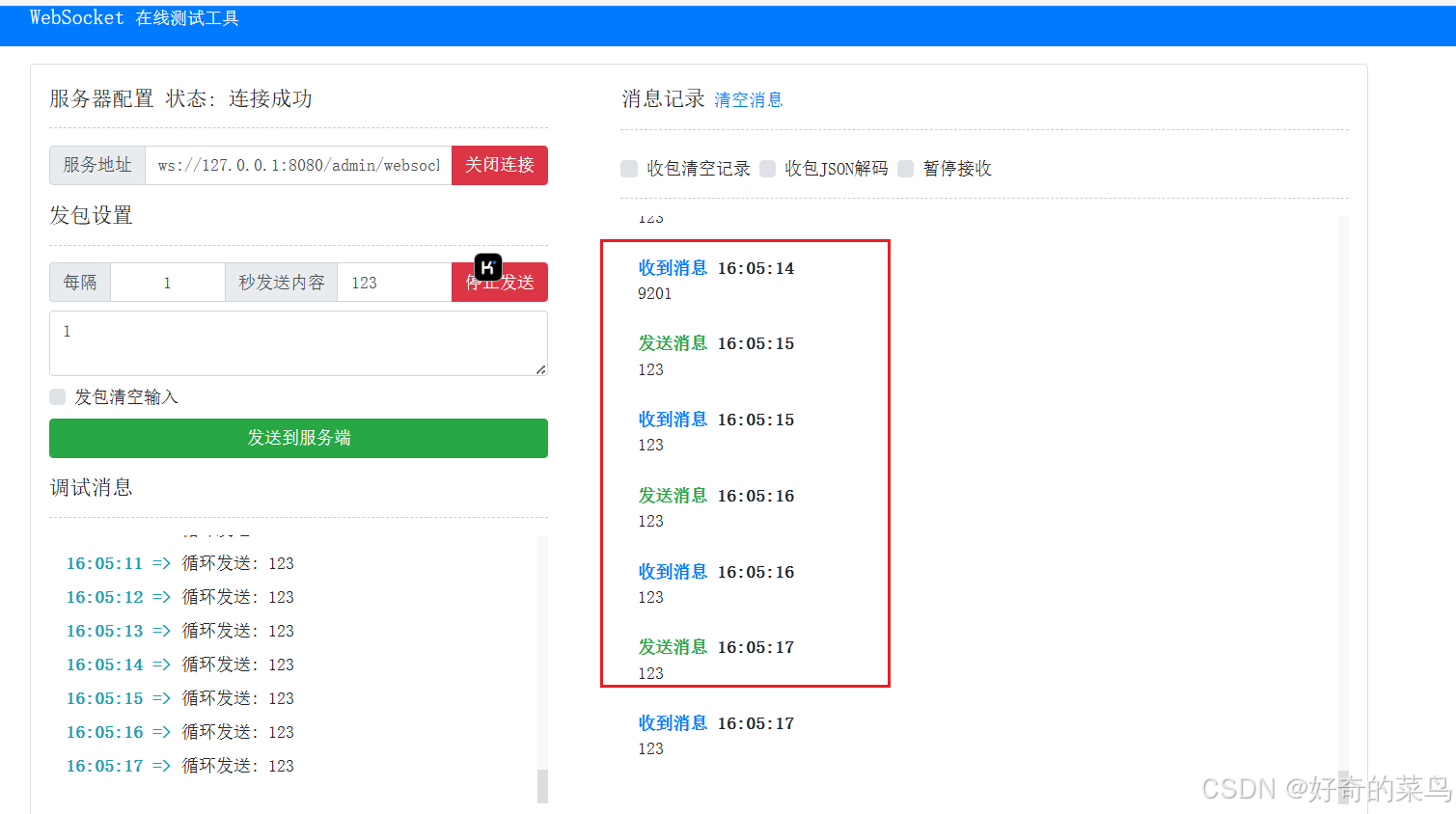Spring Cloud Gateway接入WebSocket:实现实时通信
在现代的微服务架构中,实时通信变得越来越重要。Spring Cloud Gateway作为Spring Cloud生态中的API网关,提供了动态路由、监控、弹性、安全等功能。本文将介绍如何通过Spring Cloud Gateway接入WebSocket,实现服务之间的实时通信。
为什么需要WebSocket
WebSocket提供了全双工通信机制,允许服务器主动向客户端发送消息,这在需要实时数据推送的场景(如聊天应用、实时通知等)中非常有用。
Spring Cloud Gateway配置
首先,我们需要在Spring Cloud Gateway中配置WebSocket路由。以下是配置示例:
spring:
cloud:
gateway:
discovery:
locator:
lowerCaseServiceId: true
enabled: true
routes:
- id: ruoyi-system2
uri: lb:ws://ruoyi-system
predicates:
- Path=/admin/websocket/**
filters:
- StripPrefix=1
这里配置了一个WebSocket路由,将/admin/websocket/**路径的请求转发到ruoyi-system服务。
安全配置
为了确保WebSocket通信的安全,我们还需要进行一些安全配置:
security:
xss:
enabled: true
excludeUrls:
- /system/notice
# 不校验白名单
ignore:
whites:
- /auth/logout
- /auth/login
- /auth/register
- /*/v2/api-docs
- /csrf
- /admin/websocket/**
依赖配置
在admin模块中添加WebSocket依赖:
<dependency>
<groupId>org.springframework.boot</groupId>
<artifactId>spring-boot-starter-websocket</artifactId>
</dependency>
WebSocket配置类
创建一个配置类,启用WebSocket支持:
import org.springframework.context.annotation.Bean;
import org.springframework.context.annotation.Configuration;
import org.springframework.web.socket.server.standard.ServerEndpointExporter;
@Configuration
public class WebSocketConfig {
@Bean
public ServerEndpointExporter serverEndpointExporter() {
return new ServerEndpointExporter();
}
}
WebSocket实现
实现WebSocket服务端:
import lombok.extern.slf4j.Slf4j;
import org.springframework.stereotype.Component;
import javax.websocket.*;
import javax.websocket.server.PathParam;
import javax.websocket.server.ServerEndpoint;
import java.io.IOException;
import java.util.concurrent.CopyOnWriteArraySet;
@ServerEndpoint("/websocket/{sid}")
@Component
@Slf4j
public class WebSocketServer {
private static int onlineCount = 0;
private static CopyOnWriteArraySet<WebSocketServer> webSocketSet = new CopyOnWriteArraySet<>();
private Session session;
private String sid = "";
@OnOpen
public void onOpen(Session session, @PathParam("sid") String sid) {
this.session = session;
webSocketSet.add(this);
addOnlineCount();
log.info("有新窗口开始监听:" + sid + ", 当前在线人数为" + getOnlineCount());
this.sid = sid;
try {
sendMessage("连接成功");
} catch (IOException e) {
log.error("websocket IO异常");
}
}
@OnClose
public void onClose() {
webSocketSet.remove(this);
subOnlineCount();
log.info("有一连接关闭!当前在线人数为" + getOnlineCount());
}
@OnMessage
public void onMessage(String message, Session session) {
log.info("收到来自窗口" + sid + "的信息:" + message);
for (WebSocketServer item : webSocketSet) {
try {
item.sendMessage(message);
} catch (IOException e) {
e.printStackTrace();
}
}
}
@OnError
public void onError(Session session, Throwable error) {
log.error("发生错误");
error.printStackTrace();
}
public void sendMessage(String message) throws IOException {
this.session.getBasicRemote().sendText(message);
}
public static void sendInfo(String message, @PathParam("sid") String sid) throws IOException {
log.info("推送消息到窗口" + sid + ",推送内容:" + message);
for (WebSocketServer item : webSocketSet) {
try {
if (sid == null) {
item.sendMessage(message);
} else if (item.sid.equals(sid)) {
item.sendMessage(message);
}
} catch (IOException e) {
continue;
}
}
}
public static synchronized int getOnlineCount() {
return onlineCount;
}
public static synchronized void addOnlineCount() {
WebSocketServer.onlineCount++;
}
public static synchronized void subOnlineCount() {
WebSocketServer.onlineCount--;
}
public static CopyOnWriteArraySet<WebSocketServer> getWebSocketSet() {
return webSocketSet;
}
}
测试工具
可以使用WebSocket在线测试工具进行测试。
测试步骤
-
通过网关连接:
ws://127.0.0.1:8080/admin/websocket/123 -
直接连接服务:
ws://127.0.0.1:9201/websocket/123
通过以上步骤,可以实现Spring Cloud Gateway与WebSocket的集成,实现实时通信功能。

